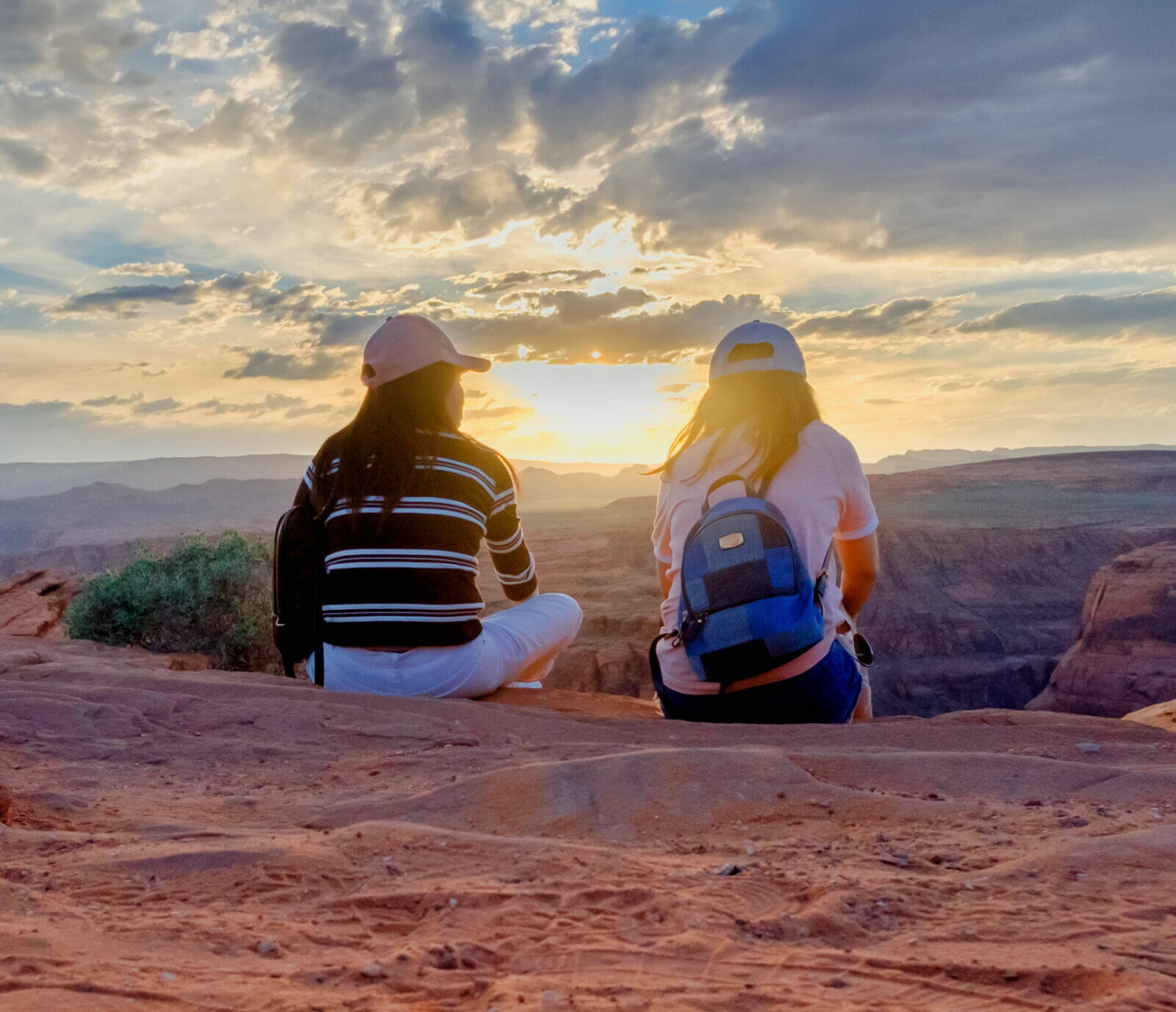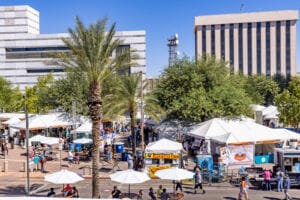The American Southwest has always carried a certain weight of symbolism. Its deserts are wide, its mesas stretch like stone cathedrals, and its sunsets pour color across the sky as if the world is reminding you of possibility. For those navigating sobriety, Arizona and Utah offer a particularly striking backdrop. These two states sit side by side, yet they hold very different reputations—Arizona known for its mix of urban energy and desert freedom, Utah shaped by community-centered traditions and breathtaking natural landscapes. Together, they create a region that feels tailor-made for anyone ready to rebuild life with more clarity, connection, and strength.
A Landscape That Challenges and Supports
Sobriety isn’t just about saying no to a drink. It’s about reshaping the way you engage with the world around you. That’s where the geography of the Southwest comes in. Arizona and Utah both invite you outdoors, almost daring you to swap late nights with sunrise hikes. There’s something grounding about walking through red rock canyons or watching saguaros stand tall against a wide blue sky. The terrain demands your presence, and being present is often half the battle when you’re creating a life that doesn’t revolve around alcohol.
What sets this region apart is the balance it strikes between solitude and community. You can lose yourself in the quiet of Monument Valley, then come back into Phoenix or Salt Lake City and find a support group that reminds you you’re not doing this alone. Sobriety can thrive when there’s space for both reflection and connection, and the Southwest offers plenty of both.
LOCAL NEWS: 10 things you may not know are manufactured in Arizona
INDUSTRY INSIGHTS: Want more news like this? Get our free newsletter here
Tools That Travel With You
The physical environment is a gift, but there’s also practical work involved in recovery. Whether you’re in Tucson, Flagstaff, or Provo, you’re not left without resources. The rise of online meetings and telehealth has changed the landscape for the better. You can take lessons learned in person and carry them into your day-to-day life through a screen, a phone call, or a podcast.
It also helps to keep strategies on hand that fit into your routine. Some people lean on fitness or creative hobbies, while others prefer structured approaches like journaling or daily check-ins with peers. The point isn’t to build a perfect system but to find what sticks. For many, that starts with simple practices, the kind you can remind yourself of when temptation creeps in. These might include small tips to stop drinking when stress or social pressure surfaces, but the larger goal is rewiring daily choices so that alcohol is no longer part of the equation. The desert doesn’t hand out shortcuts, and neither does recovery, but the gradual reshaping of habits is what ultimately builds confidence.
Arizona’s Wide Open Possibilities
Arizona can surprise you with its mix of energy and stillness. Phoenix has a sprawling metropolitan scene where support groups meet across neighborhoods every day, while Sedona leans into its reputation for spiritual renewal. The state’s culture is less rigid than Utah’s, which can make it appealing for people who want options in how they structure their sobriety.
Arizona is also a place where reinvention feels possible. Transplants come from all over, so there’s less sense of being trapped in old roles. That fresh-start energy can help someone in recovery find footing. The state’s outdoor culture feeds into this too. Trail systems wind across nearly every region, from Camelback Mountain in the center of Phoenix to the high-country hikes around Flagstaff. That kind of access can create daily opportunities to feel physically grounded and mentally clearer, replacing old routines with ones that support health and stability.
It’s worth noting that Arizona is also becoming a hub for recovery-oriented services. Larger cities provide a wide range of professional support, while smaller communities still manage to cultivate tight-knit sobriety groups. That means you can move at your own pace, connecting with resources that match your comfort level.
Utah’s Structure and Support
Utah, on the other hand, offers a different kind of environment. Community here is deeply valued, and sobriety can benefit from that strong emphasis on accountability and family connection. In many places, there’s less of a drinking culture to begin with, which can make it easier to find social spaces where alcohol simply isn’t part of the experience.
But Utah also has its challenges. For someone coming in from outside, the cultural expectations can feel overwhelming. That’s where tailored programs come into play. For example, outpatient services provide structured help without removing you from everyday life. If you’re looking for options, you might consider an intensive outpatient program, or even an IOP near Draper UT, where the combination of professional support and community engagement can make a difference. Utah’s growing network of treatment centers reflects the state’s understanding that while culture shapes sobriety, it can’t replace the need for practical tools and guidance.
The beauty of Utah’s landscape also plays a role. Places like Zion and Bryce Canyon aren’t just for tourists; they’re reminders of scale. Standing beneath towering cliffs or looking out over endless valleys can shift perspective in ways that therapy sessions alone sometimes can’t. Sobriety often requires reframing how you see yourself in the bigger picture, and Utah’s scenery doesn’t let you forget how much bigger that picture really is.
Finding Balance Between Two States
When Arizona and Utah are considered together, the contrast becomes an advantage. Arizona offers flexibility, reinvention, and a more individualistic approach to recovery, while Utah brings structure, community, and a cultural landscape where alcohol isn’t as dominant. The border between them isn’t just geographic; it’s symbolic of the balance many people seek when working toward sobriety.
Some find that balance by living in one state and traveling to the other. Weekend retreats, workshops, or simply a change of environment can help break cycles. Others use the Southwest as a backdrop for redefining identity. A move from Arizona to Utah or vice versa can serve as a personal reset, trading one kind of support for another. The beauty of having these two environments side by side is that you don’t have to choose only one way of approaching sobriety.
The region as a whole seems to echo the themes of recovery: resilience, patience, and growth. The desert doesn’t change overnight, but over time, with the right conditions, it produces life in unexpected places. Sobriety in the Southwest feels much the same.
Living With Presence and Purpose
The American Southwest doesn’t offer shortcuts, but it does provide perspective. Sobriety here isn’t framed as deprivation but as an opening, a way of engaging more directly with both the land and the life in front of you. Arizona’s expansiveness and Utah’s communal grounding may seem like opposites, but together they paint a fuller picture of what recovery can look like.
Daily choices, steady practices, and honest connections form the foundation, but the geography offers its own lessons. Wide horizons remind you to look forward, not back. Towering red cliffs remind you of strength that’s been tested by time. Quiet desert mornings remind you that peace isn’t a luxury but something you can cultivate with each sober step.
Closing Reflection
Sobriety in the American Southwest feels like more than a personal journey. It reflects the landscape itself, a mix of harsh beauty and unexpected growth. Arizona and Utah, side by side, show that different approaches can work together, offering both freedom and structure to anyone ready to embrace a clearer way of living. The desert doesn’t give easy answers, but it does offer space to rebuild with honesty, patience, and hope. And in that space, many people discover that life without alcohol isn’t about limitation—it’s about finally having room to breathe.




